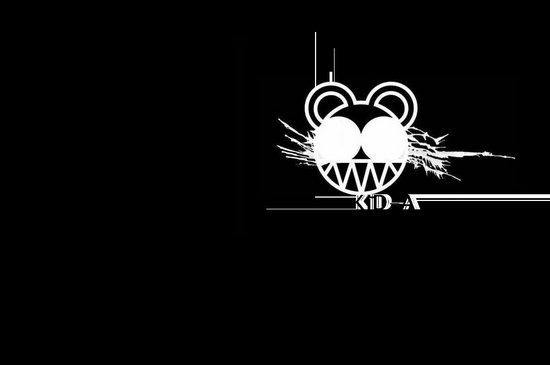So I dug up the tracklisting for the reissues of Kid A and Amnesiac and Hail To The Thief and I saw the rundown of all the session tracks and remixes and live performances and even more live performances and special videos and live video performances and this and that and the other and I went slackjawed.
Not with excitement.
Part of it was the work day (and part of it was the weather and the atmosphere — all the fires around here in Southern California have pumped who knows how much crud into the air, though somehow I’m still reasonably coherent). But even allowing for that, I felt befuddled and tired upon seeing the conclusion of EMI’s kissoff to Radiohead, a last act that is so patently obvious that all I can do is shrug. But the obviousness goes both ways, inevitably. EMI hope to squeeze blood from a stone, Radiohead protest about the prostitution of art, writers of a certain generation/mindset/Morrissey-lyrics-awareness hum a certain late Smiths song to themselves.
So, rather than being bowled over by the news, I found myself thinking of something I muttered in another piece a few years back when the Siouxsie and the Banshees B-sides collection came out (and which might just be as appropriate this year with the release of the BBC sessions set) — these days, record companies recognize a certain groundswell of possibility, sense the obsessiveness and high enough profile of a certain kind of fan, try and put together all the rarities and oddities and otherwise hard to find numbers because they’ve been traded online like mad via said fans. They get buffed up and cleaned up and put together in a perfect little package . . . and then they get ripped from that source and traded and shared online all over again. An odd sort of economy.
But at least in the case of Siouxsie’s work there was a question of items that had never made CD, out of print and pretty much out of sight. They weren’t already established worldwide from the moment of their appearance, slammed up on fansites and talked to death even in the dawning days of this almost-gone decade, before Friendster, MySpace, Facebook, YouTube and more besides, all of which helped to revive them again and again. One reads about the live tracks that have been fired back and forth among torrents, the video clips rated and ranked and taken down and put back up again, and one tries to square this against a world where EMI all but says that its other big reissue series involving a British band this fall is because CD is dying as a format, where physical delivery of rental DVDs through the mail is probably the next thing to go due to lack of necessity, and of course where the band wants nothing to do with any of this, content to be the most famous insular band it wants to be.
Careful cultivators of their mystique, that’s what the band’s always been, and calling them that is no more or less a criticism than calling EMI an entity interested in profit spun out of its properties. If they could have run all their affairs via their website from the start back in the mid-90s they would have done, though the infrastructure to fully do so wasn’t there yet (and ultimately isn’t quite there now). They’re not foolish enough to assume that they were ever fully separate from the business and their protests over the reissues are both rote and heartfelt as a result.
Still, though, perhaps the protests could be even more heartfelt and to the point in one regard. If EMI had to reissue the albums, they should have done so in the way that they were first presented to the public via the media, a real harbringer of the future even more than the music might ever have been. Imagine the niche market of small cassette players with a copy of Amnesiac glued and taped inside, only carefully branded with crying bears and distressed edges, for instance.
Imagine if EMI were really serious about a Kid A reissue and released it in the real way it was heard from the start — not CD, not even the burdensome revenant that is vinyl, but a glitchy, lo-fi 128 kpbs rip of the promo CD with the tiny bonus track after “Motion Picture Soundtrack” cut off. Heck, release it through Napster just the same way it first appeared for everyone back then in the late summer of 2000 — doesn’t matter that Napster as such is just a random outlet for the Best Buy chain in America, it would have given that business a better exclusive than the damp wet fart that was Chinese Democracy last year.
Well, dare to dream, I guess. Instead, these remasters come out, there will be further mastering comparisons in some corners to see if the loudness wars are still an issue, and Radiohead will at the end of the year release a track via encrypted text files and a fractal image entitled ‘My Thoughts of Grey Anger (In Trust).’ This will then be denied by Jonny in a blog post, the initial letters of each sentence of which will spell out the name of the real next single. By this point, EMI will have remastered a murky demo tape from 1992 and will offer on-demand CD burns reconverted from MP3. As for me, I’ll just hope the band tours America again soon, I missed them the last couple of times.



